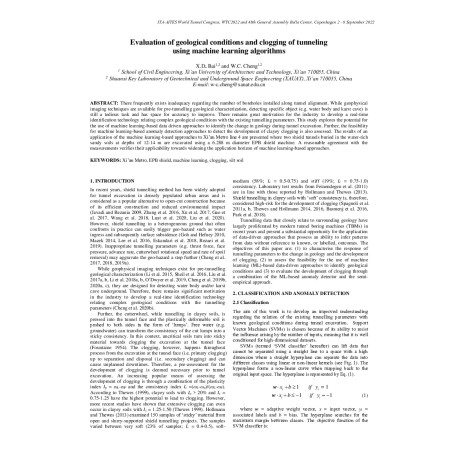Cart
0
0
No document
0,00 €
Total
Document successfully added to your shopping cart
Quantity
Total
There are 0 items in your cart.
There is 1 item in your cart.
Total documents
Total shipping
To be determined
Total
Search & filter
Search for a publication
Search & filter
Viewed documents
New


Evaluation of geological conditions and clogging of tunneling
Evaluation_of_Geological_Conditi
There frequently exists inadequacy regarding the number of boreholes installed along tunnel alignment. While geophysical imaging techniques are available for pre-tunnelling geological characterization, detecting specific object (e.g. water body and karst cave) is still a tedious task and has space for accuracy to improve. There remains great motivation for the industry to develop a real-time identification technology relating complex geological conditions with the existing tunnelling parameters. This study explores the potential for the use of machine learning-based data driven approaches to identify the change in geology during tunnel excavation. Further, the feasibility for machine learning-based anomaly detection approaches to detect the development of clayey clogging is also assessed. The results of an application of the machine learning-based approaches to Xi’an Metro line 4 are presented where two shield tunnels buried in the water-rich sandy soils at depths of 12-14 m are excavated using a 6.288 m diameter EPB shield machine. A reasonable agreement with the measurements verifies their applicability towards widening the application horizon of machine learning-based approaches.


